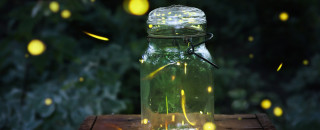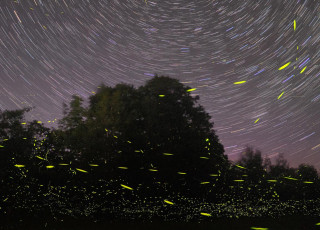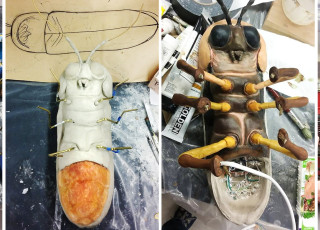Hunting for Utah Fireflies
By Michael Mozdy
Growing up in Pennsylvania, I was accustomed to having our summer evenings lit up momentarily – just after dark – by magical clouds of fireflies. I remember running with my friends to try to catch them, often right at the edge of the woods. We would dart in and out, trying to estimate the flight paths of these real-life fairies. They flew slowly enough for us to nab them in our hands and peek at them in between our thumbs, or even collect a bunch in a jar and carry it around like a living lantern.
After I moved to Utah in the late 1990s, I realized I hadn’t seen any despite a lot of time outdoors hiking and camping. I figured that Utah was either too high in elevation, too dry, or some combination of other factors that made it an unsuitable habitat for fireflies.
Turns out I was wrong.
“There are absolutely fireflies in Utah!” Christy Bills, the NHMU Entomology Collections Manager, tells me. “People see them all over the state, and they’re helping us create a map of where they live.”
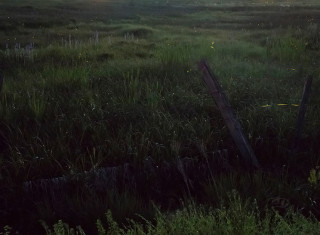
Bills has been with the museum for 18 years, and has heard tales of firefly sightings throughout those years. In 2013, Bills began talking about fireflies with some researchers at BYU who wanted to study their genetics. But Utah is a large state, with very remote areas. Simply finding out where these little buggers might live was a daunting task. They decided to launch a Citizen Science project to help them collect the data they needed.
Citizen science is a term that was coined in the mid 1990s describing something that has been going on for well over a century. Essentially, it means using non-scientists to help collect scientific data. Amateur birdwatchers have been describing birds, habitats, and populations since the late 1800s. Other areas like butterfly counts, astronomy, and oceanography wouldn’t be where they are today was it not for regular people contributing their volunteer hours.
Citizen scientists often partner with professional scientists, and large volunteer networks allow scientists to accomplish tasks that would be too expensive or time consuming otherwise.
Thus, Bills and the BYU researchers launched their Firefly Citizen Science Project and everyone in Utah is invited to report when and where they spot fireflies using the online web form. The scientists are excited because they are able to start getting population data and can re-visit sites where fireflies have been glimpsed to begin genetic research on them. The BYU team is investigating how Utah fireflies may differ genetically from those in other parts of the country.
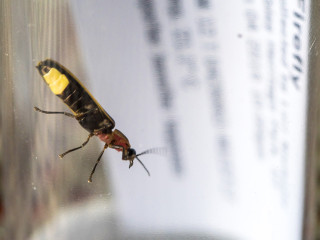
Bills is excited for another reason, too: she sees this as an important way to have rural Utahans participate in bringing data back to our research communities. “People living in rural areas, close to the land, have so much knowledge about the area where they live,” she says. “I’m excited to have them share it with us and let them know that they are valued in advancing science.”
2016 marks the third year of the project, and 150 sightings have been added to the map (which you can see online). Bills and the BYU researchers’ next task is to return to these sites and try to collect specimens for further study. She has honed her approach to visiting sites. “Last year, using just the online reported data, I drove so far and spent so many hours just to stare in the dark and see nothing,” she laments. Now, she contacts those who have reported a sighting, and visits them so they can walk her to the exact location they spotted the fireflies. It has resulted in much better success finding specimens for collection.
If you’re an outdoor enthusiast or someone who lives in a rural community and has seen fireflies, please report your data. Bills is also looking for a volunteer who can go through historical records and look for references about pioneers sighting fireflies. Send an email to fireflies@nhmu.utah.edu if you think you’d be a good fit for this role.
Michael Mozdy is a Digital Science Writer for The Natural History Museum of Utah, a part of the University of Utah in Salt Lake City. Our mission is to illuminate the natural world and the place of humans within it. In addition to housing outstanding exhibits for the public, NHMU is a research museum. Learn more.
